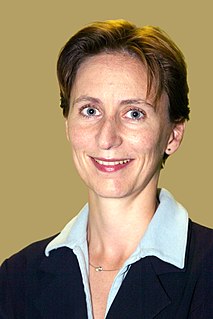
Cognitive science is the interdisciplinary, scientific study of the mind and its processes with input from linguistics, psychology, neuroscience, philosophy, computer science/artificial intelligence, and anthropology. It examines the nature, the tasks, and the functions of cognition. Cognitive scientists study intelligence and behavior, with a focus on how nervous systems represent, process, and transform information. Mental faculties of concern to cognitive scientists include language, perception, memory, attention, reasoning, and emotion; to understand these faculties, cognitive scientists borrow from fields such as linguistics, psychology, artificial intelligence, philosophy, neuroscience, and anthropology. The typical analysis of cognitive science spans many levels of organization, from learning and decision to logic and planning; from neural circuitry to modular brain organization. One of the fundamental concepts of cognitive science is that "thinking can best be understood in terms of representational structures in the mind and computational procedures that operate on those structures."

Neuroscience is the scientific study of the nervous system and its functions. It is a multidisciplinary science that combines physiology, anatomy, molecular biology, developmental biology, cytology, psychology, physics, computer science, chemistry, medicine, statistics, and mathematical modeling to understand the fundamental and emergent properties of neurons, glia and neural circuits. The understanding of the biological basis of learning, memory, behavior, perception, and consciousness has been described by Eric Kandel as the "epic challenge" of the biological sciences.
A cognitive model is an approximation of one or more cognitive processes in humans or other animals for the purposes of comprehension and prediction. There are many types of cognitive models, and they can range from box-and-arrow diagrams to a set of equations to software programs that interact with the same tools that humans use to complete tasks.

Neuroethology is the evolutionary and comparative approach to the study of animal behavior and its underlying mechanistic control by the nervous system. It is an interdisciplinary science that combines both neuroscience and ethology. A central theme of neuroethology, which differentiates it from other branches of neuroscience, is its focus on behaviors that have been favored by natural selection rather than on behaviors that are specific to a particular disease state or laboratory experiment.
Tim van Gelder is the co-founder of Austhink Software, an Australian software development company, and the Managing Director of Austhink Consulting. He was born in Australia, and was educated at the University of Melbourne. He went on to receive his PhD from the University of Pittsburgh (1989). He has held academic positions at Indiana University and the Australian National University before returning to Melbourne as an Australian Research Council QEII Research Fellow. In 1998, he transitioned to part-time academic work allowing him to pursue private training and consulting, and in 2005 began working full-time at Austhink Software. In 2009 he transitioned to Managing Director of Austhink Consulting. He co-leads The SWARM Project at the University of Melbourne.

Dynamical systems theory is an area of mathematics used to describe the behavior of complex dynamical systems, usually by employing differential equations or difference equations. When differential equations are employed, the theory is called continuous dynamical systems. From a physical point of view, continuous dynamical systems is a generalization of classical mechanics, a generalization where the equations of motion are postulated directly and are not constrained to be Euler–Lagrange equations of a least action principle. When difference equations are employed, the theory is called discrete dynamical systems. When the time variable runs over a set that is discrete over some intervals and continuous over other intervals or is any arbitrary time-set such as a Cantor set, one gets dynamic equations on time scales. Some situations may also be modeled by mixed operators, such as differential-difference equations.
Passive dynamics refers to the dynamical behavior of actuators, robots, or organisms when not drawing energy from a supply. Depending on the application, considering or altering the passive dynamics of a powered system can have drastic effects on performance, particularly energy economy, stability, and task bandwidth. Devices using no power source are considered "passive", and their behavior is fully described by their passive dynamics.
Neuroinformatics is the field that combines informatics and neuroscience. Neuroinformatics is related with neuroscience data and information processing by artificial neural networks. There are three main directions where neuroinformatics has to be applied:
Action selection is a way of characterizing the most basic problem of intelligent systems: what to do next. In artificial intelligence and computational cognitive science, "the action selection problem" is typically associated with intelligent agents and animats—artificial systems that exhibit complex behaviour in an agent environment. The term is also sometimes used in ethology or animal behavior.
Embodied cognitive science is an interdisciplinary field of research, the aim of which is to explain the mechanisms underlying intelligent behavior. It comprises three main methodologies: the modeling of psychological and biological systems in a holistic manner that considers the mind and body as a single entity; the formation of a common set of general principles of intelligent behavior; and the experimental use of robotic agents in controlled environments.
Neurorobotics is the combined study of neuroscience, robotics, and artificial intelligence. It is the science and technology of embodied autonomous neural systems. Neural systems include brain-inspired algorithms, computational models of biological neural networks and actual biological systems. Such neural systems can be embodied in machines with mechanic or any other forms of physical actuation. This includes robots, prosthetic or wearable systems but also, at smaller scale, micro-machines and, at the larger scales, furniture and infrastructures.
The Interdisciplinary Center for Neural Computation is a research center of the Hebrew University. It was established in 1992 to provide an inter-face for interactive research in Neurobiology, Physics and Applied Physics Computer Science and Psychophysics with the objective of increasing the understanding of how the brain works with specific focus on computational aspects of the nervous system. The center has facilities for studying and modeling the nervous system at its different levels, from single neuron computation to signal processing in small and large cortical networks, to the system and the behavioral level. This is backed up by 26 faculty members.

Theodore Holmes Bullock is one of the founding fathers of neuroethology. During a career spanning nearly seven decades, this American academic was esteemed both as a pioneering and influential neuroscientist, examining the physiology and evolution of the nervous system across organizational levels, and as a champion of the comparative approach, studying species from nearly all major animal groups—coelenterates, annelids, arthropods, echinoderms, molluscs, and chordates.

Walter F. Heiligenberg is best known for his neuroethology work on one of the best neurologically understood behavioral patterns in a vertebrate, Eigenmannia. This weakly electric fish and the neural basis for its jamming avoidance response behavioral process was the main focus of his research, and is fully explored in his 1991 book, "Neural Nets in Electric Fish." As an international scientist, he worked alongside other neuroethologists and researchers to further explain animal behavior in a comprehensive manner and "through the application of a strict analytical and quantitative method". The advancements within neuroethology today are still largely due to his influences, as his life was dedicated to researching that which could be applicable to "all complex nervous systems" and he "[investigated] the general principles of nature".

Olaf Sporns is Provost Professor in Psychological and Brain Sciences at Indiana University and Scientific Co-Director of the Indiana University Network Science Institute. He is also the founding editor of the academic journal Network Neuroscience, published by MIT Press.
Vortex Studio is a complete simulation software platform. It features a high-fidelity, realtime physics engine developed by CM Labs Simulations that simulates rigid body dynamics, collision detection, contact determination, and dynamic reactions. It also contains model import and preparation tools, an image generator, and networking tools for distributed simulation, accessed through a desktop editor via a GUI. Vortex adds accurate physical motion and interactions to objects in visual-simulation applications for operator training, mission planning, product concept validation, heavy machinery and robotics design and testing, haptics devices, immersive and virtual reality (VR) environments.

Jörg-Peter Ewert is a German neurophysiologist and researcher in the field of Neuroethology. From 1973 to 2006, he served as a university professor in the Faculty of Natural Sciences at the University of Kassel, Germany.
Models of neural computation are attempts to elucidate, in an abstract and mathematical fashion, the core principles that underlie information processing in biological nervous systems, or functional components thereof. This article aims to provide an overview of the most definitive models of neuro-biological computation as well as the tools commonly used to construct and analyze them.
AnimatLab is an open-source neuromechanical simulation tool that allows authors to easily build and test biomechanical models and the neural networks that control them to produce behaviors. Users can construct neural models of varied level of detail, 3D mechanical models of triangle meshes, and use muscles, motors, receptive fields, stretch sensors, and other transducers to interface the two systems. Experiments can be run in which various stimuli are applied and data is recorded, making it a useful tool for computational neuroscience. The software can also be used to model biomimetic robotic systems.

Aude G. Billard is a Swiss physicist in the fields of machine learning and human-robot interactions. As a full professor at the School of Engineering at Swiss Federal Institute of Technology in Lausanne (EPFL), Billard’s research focuses on applying machine learning to support robot learning through human guidance. Billard’s work on human-robot interactions has been recognized numerous times by the Institute of Electrical and Electronics Engineers (IEEE) and she currently holds a leadership position on the executive committee of the IEEE Robotics and Automation Society (RAS) as the vice president of publication activities.








